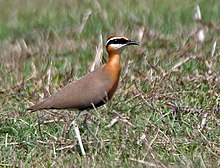A
forest fragment might seem like a poor habitat for birds. But in Costa
Rica, scientists have found that one bird species is faring much better
in fragments than in a nearby forest reserve, where snakes are killing
nestlings at an alarming rate.
The
researchers studied chestnut-backed antbirds, which live in the forest
understory. This species is unusual because it tends to hang on in
forest fragments, while other birds vanish.
The
team looked for the antbirds in three types of landscapes in Costa
Rica: an intact swath of old-growth forest, a protected peninsula at La
Selva Biological Station, and two forest fragments. At each site, the
scientists monitored nests with video cameras, collecting more than
22,000 hours of footage at 99 nests. The team then reviewed the videos
to identify predators that had eaten the eggs or nestlings.
Surprisingly,
the birds’ population density was the highest in the forest fragments.
The team counted about 40 to 47 pairs of birds per 100 hectares in the
fragments but only 17 and 9 pairs per 100 hectares in the intact forest
and La Selva reserve, respectively.
The
forest fragments also had among the lowest nest predation rates. Nests
had a 64 and 72 percent chance of being raided in the two fragments,
compared to 79 percent in the intact forest and 95 percent at the
reserve. Predators included snakes, fire ants, an opossum, an ocelot,
and a hawk. But the bird-eating snake (Pseustes poecilonotus) was by far
the deadliest, accounting for about 80 percent of the nest attacks.
The
results suggest that attacks on eggs and nestlings are not driving
chestnut-backed antbirds to decline in forest fragments, the team says.
“[F]ragments may instead provide refuge from nest predation, allowing
population increase,” the authors write in Biological Conservation.
However, it’s also possible that the species is just taking advantage of
the disappearance of other, less hardy antbirds.
Bird-eating
snakes might thrive at La Selva because they are protected from hunting
and have few predators, the authors speculate. To find out more about
the snakes’ activity, researchers could capture some of the animals and
equip them with radio transmitters. — Roberta Kwok | 26 February 2015
Source:
Increased abundance, but reduced nest predation in the chestnut-backed
antbird in Costa Rican rainforest fragments: surprising impacts of a
pervasive snake species. Biological Conservation doi: 10.1016/j.biocon.2015.01.015.









